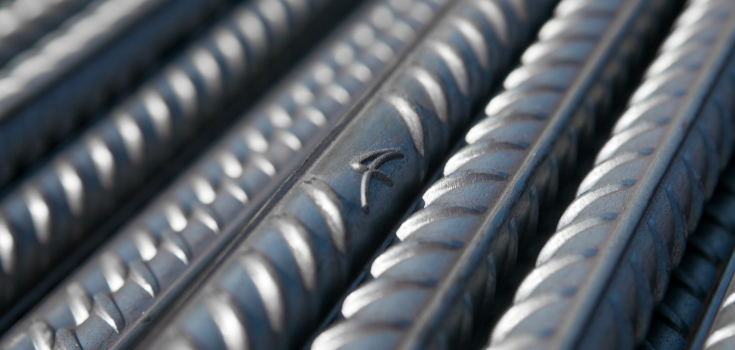Shear stress is the most important concept in daily life, engineering, and material science. It tells you how forces apply parallel to a surface, making a single layer of material slide over another.
Understanding shear stress is important if you develop machines, make structures, or study fluid flow. This blog tells you about shear stress, its formula, units, behavior in steel and fluids, for better clarity.
What is Shear Stress?
It appears when the force acts indirectly on a material surface, making nearby layers slide past each other. Unlike tensile or squeezing stress, which acts across, shear stress always acts overlapping the plane of interest.
Just imagine, think about pushing the top of a deck of playing cards sideways while the bottom stays fixed. The result is that the layers slide against one another and then create shear stress. This situation is vital for analyzing beams, shafts, fasteners, and even soil under load.
Shear stress is an important component in assuring structural safety. If ignored, it can lead to a part deformation or cause total failure. Hence, engineers calculate before they use their materials and prepare their joints.
Shear Stress Formula

Shear stress is calculated by dividing the applied shear force by the cross-sectional area resisting it.
Symbols in the Formula
| Symbol | Meaning |
| τ | Shear stress |
| F | Applied force (parallel to the surface) |
| A | Cross-sectional area (resisting area) |
Formula
τ = F / A
This formula explains to you that shear stress increases when the force increases or when the resisting area decreases.
Shearing Stress Units
It is defined as the ratio of force divided by area. This is the reason why the units of shear stress are the same as those of pressure. It is Pascal (Pa) in the SI system-the Pascal is defined as one Newton per square meter (N/m²).
MPa (Megapascal): 1 MPa = 1,000,000 Pa.
N/mm² (Newton per square millimeter): This is generally used in mechanical design.
Psi (pounds per square inch): Mostly used in the Imperial System.
Through these units, you learn comparisons between different stress of materials. Bolt shear strength would have been expressed in MPa, while fluid stress is usually used in Pa.
Shear Stress of Steel

It is a popular material used in construction and manufacturing. It is useful for structural load-bearing where shear-resistant components are beams, rivets, shafts, and parts of machinery.
Its shear strength highly depends on the grades and composition types. Below is a table with typical values:
| Type of Steel | Approximate Shear Strength (MPa) | Applications |
| Mild Steel | 210 – 250 | Bolts, general structures |
| Structural Steel | 250 – 400 | Bridges, frames |
| Stainless Steel | 300 – 500 | Food industry, medical tools |
| High-Strength Alloy | 500 – 800 | Aerospace, heavy machinery |
After these values, the selection is based on the grade indicated for some application. Aerospace parts require an alloy that has high strength. Mild steel is good only for general construction.
Shearing Stress in Fluids

Shear stresses appear in fluids when adjacent layers of liquid or gas are moving at different rates. The more mobile layer pulls the slower one, with the effects of sliding between the two. The velocity difference creates internal resistance to motion, called shear stress.
For example, when water flows in a pipe, the molecules right by the wall are almost not moving, while the ones in the center are moving very fast. The resistance between these two layers creates shear stress. Shear stress is more visible in thicker fluids like honey since its particles resist movement more than water or air.
Shear stress in a fluid finds its importance in many areas. It would explain how lubricants decrease friction in machines, blood flow in arteries, and drag upon aeroplanes moving through the air. Shear stress estimates how fluids will respond in every situation concerning motion and pressure.
Shearing Stress Examples
You face shear stress in daily life and engineering applications. Here are some examples:
- Cutting paper with scissors (shear force is at work through the blades).
- Sliding one deck of cards over the other.
- Rivet or bolt shear load in machinery.
- Transversely loaded beams in bridges or buildings.
- Shear in fluids flowing through pipelines, where a difference in velocity creates shear.
These examples display the shear stress from simple objects to complex engineering designs.
Shear Stress vs Other Stresses
Thus, shear stress is better understood when compared to other fundamental stresses. These are the examples:
| Type of Stress | Force Direction | Effect on Material | Common Example |
| Tensile Stress | Perpendicular (pulling) | Material elongates | Rope under tension |
| Compressive Stress | Perpendicular (pushing) | Material shortens or crushes | Column under load |
| Shear Stress | Parallel (sliding) | Layers slide past each other | Scissors cutting paper |
The important key difference is the direction. Tensile and compressive stress are perpendicular to a surface; shear stress acts indirectly. This makes shear stress particularly relevant to fasteners and beams, where sliding forces are typically involved.
Conclusion
Shear stress is the main variable in understanding how forces act on materials and fluids. Shear stresses lead you to the designing of safe, reliable structures, machines, and flow systems produced through different methods of shear stress study.
At DEK, we offer you customised machining solutions that consider challenges such as shear stress within your projects. Contact us to learn how advanced engineering serves to enhance performance and durability.
